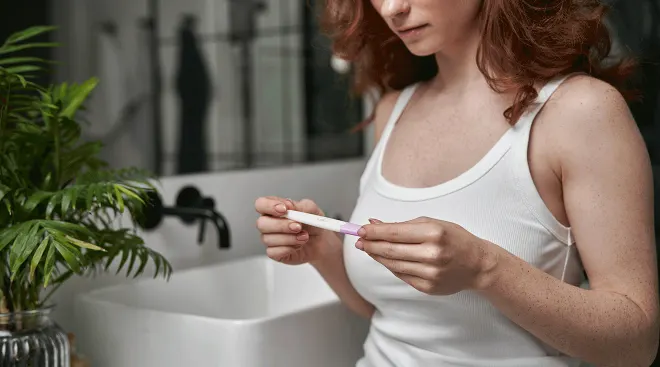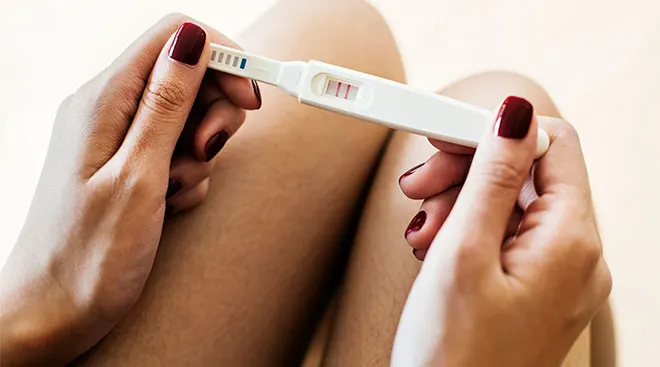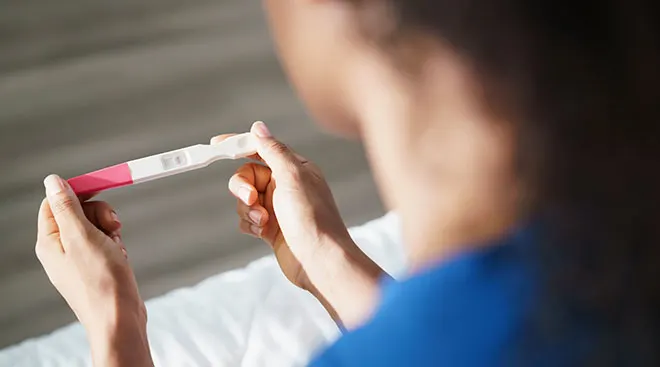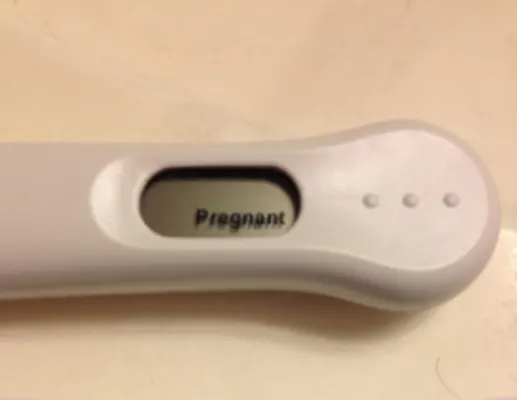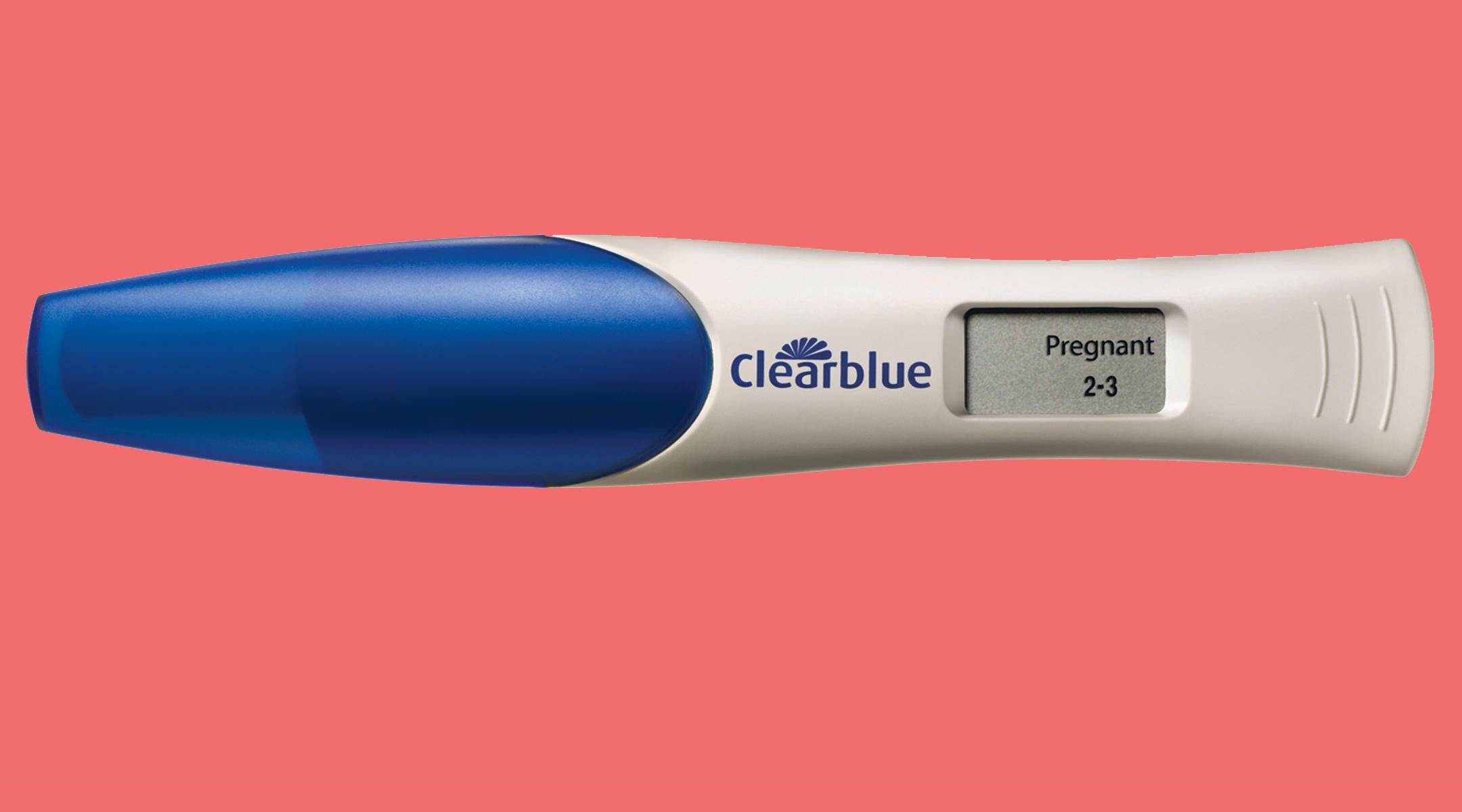What Are the Chances of a False Positive Pregnancy Test?
If you’ve been trying to get pregnant, seeing two lines (or a plus sign) on a pregnancy test is one of the most exciting experiences. Still, your knee-jerk reaction might be to ask yourself: Is it too good to be true? Rest assured that the vast majority of the time, if you’re getting a positive pregnancy test result, you are, in fact, pregnant! But every once in a while, a false positive pregnancy test can occur. It can be crushing to find out that you’re not actually expecting, and it may leave you with lots of questions and concerns. So what causes a false positive pregnancy test? Moreover, what are the chances of a false pregnancy test? Here, we’ll share how and why this may happen.
Can you get a false positive pregnancy test? Yes, it’s possible in some cases, says Erin DuMontier, MD, an ob-gyn with BJC Medical Group and Missouri Medical Center. So what is a false positive pregnancy test, exactly? Well, it’s pretty much much what it sounds like: Your test result indicates that you’re pregnant when you’re in fact not.
Seeing a positive result and later learning you were never actually pregnant can be devastating. The good news for prospective testers is that the chances of a false positive pregnancy test are very low. So just how common are false positive pregnancy tests then? “False positive pregnancy tests are rare and occur less than 1 percent of the time,” confirms DuMontier. Generally speaking, there will be a contributing factor if you’re seeing a false positive pregnancy test. If not, you can assume the test you’ve used is faulty in some way.
While a false positive pregnancy test is rather uncommon, there are a few things that can cause this to occur. Essentially, anything that introduces the presence of detectable amounts of the pregnancy hormone human chorionic gonadotropin (hCG) into your body—other than pregnancy, of course—can lead to a false positive result. Keep reading for possible causes.
Recent miscarriage or abortion
If you get a positive result that you weren’t expecting, but you’ve recently had a miscarriage or abortion, you may simply have some pregnancy hormone lingering in your body. “hCG levels can remain elevated for up to four to six weeks after an abortion or miscarriage,” says DuMontier. In this case, you may want to wait another week to test again to ensure your levels are back to what they were before pregnancy (women have a very small, undetectable amount of hCG in their systems even when they’re not expecting). If you still see a positive result after that timeframe, it’s important to follow up with your doctor.
Chemical pregnancy
A chemical pregnancy is another potential factor. Since tests like First Response are so sensitive that they detect a pregnancy six days before the first day of the missed period, more and more early pregnancies are detected now, says Mary Jane Minkin, MD, an ob-gyn and clinical professor at Yale University. “Then, if that early pregnancy stops developing and the woman actually has a very early miscarriage, some women will think of that as a false positive.” Minkin elaborates that this isn’t actually considered a false positive result, though; in this instance, the woman was indeed pregnant at the time of testing. This is one reason why an early pregnancy test can be considered a double-edged sword. Despite the fact that a chemical pregnancy won’t progress, it can still take a while for hCG levels to go down.
Evaporation line
One of the more frustrating aspects of urine pregnancy tests is that the results need to be read within a certain amount of time. If you take the test and accidentally leave it sitting without reading the results, you can experience what looks like a positive result. In reality, it’s likely what’s called an evaporation line, a faint line that can occur when the test sits too long. The faint line appears after the test has dried, but most tests are meant to be read while they’re still damp, says DuMontier.
To avoid seeing an evaporation line, make sure you read the result within the specified time frame, says Minkin. She adds that many tests—like some from First Response—pair with an app that scans the analog test and converts it to a ‘pregnant’ or ‘not pregnant’ answer on your phone. This can “remove some of the ambiguity of reading tests,” she says. What’s more, every pregnancy test is slightly different. Read the instructions before using one to help eliminate the potential for human error and subsequently decrease the likelihood of getting a false positive result.
Expired pregnancy test
Believe it or not, pregnancy tests have an expiration date. Check the box, and throw it away if it’s past its prime. An expired test is more likely to give a false positive or false negative reading.
Medical conditions
Can you get a false positive pregnancy test from a medical condition? The answer is yes, but it’s not common. Heather Bartos, MD, an ob-gyn and the medical director of Be. Women’s Health & Wellness in Frisco, Texas, says that, while exceptionally rare, the following medical conditions can increase your chances of a false positive pregnancy test: ovarian cysts and/or cancer; cancer of the bladder, kidney, lung, colon, breast, liver or stomach; and pituitary gland disorders and tumors that produce hCG, such as ovarian germ cell tumors or gestational trophoblastic disease.
Certain medications
What medications can cause a false positive pregnancy test? Some can lead to an increase in hCG levels that are detectable by a pregnancy test, including fertility drugs; some anti-anxiety medications, like Xanax and Valium; certain antidepressants, such as Sertraline; antipsychotics, like Clozapine or Chlorpromazine; diuretics; antihistamines, barbiturates, Phenergan and other anti-nausea medications; and some drugs prescribed for Parkinson’s disease.
It’s important to realize that false positives from medications are rare, explains Bartos. “So many women take these meds, and we’d be seeing thousands of positive pregnancy tests each day if this was a common occurrence,” she says. That said, if you get a positive pregnancy test result and you’re on any medication, talk to your doctor.
What’s more, if you’re taking fertility drugs, your doctor has probably already walked you through the dos and don’ts of testing. “Women who are on fertility meds should not take a urine pregnancy test at all; rather, they should do a blood test with their doctor,” advises Bartos.
Any positive pregnancy result warrants follow-up with your doctor. If you’ve been trying to get pregnant and you’ve gotten a positive result, call your OB or midwife’s office right away to get on their schedule. Most practices will schedule a first visit sometime between week eight and 10, unless you’re experiencing problems or have major concerns. Some will schedule an appointment earlier to confirm a pregnancy, but you may have to ask for this specifically.
Rest assured that the likelihood of a false positive pregnancy test isn’t high. But if you’ve gotten a result that you suspect isn’t right, consider testing again in a few days. Be sure to follow the instructions carefully and follow up with your doctor as needed. Good luck!
About the experts:
Heather Bartos, MD, is an ob-gyn and the medical director of Be. Women’s Health & Wellness in Frisco, Texas. A navy veteran, she spent 12 years serving the women and spouses of the armed forces, and was an associate professor at the Uniformed Services University of Health Sciences in Bethesda, Maryland. She completed her residency at Baylor College of Medicine, and earned her medical degree at The University of Texas.
Erin DuMontier, MD, is an ob-gyn with BJC Medical Group and Missouri Medical Center. She completed both her residency and internship at George Washington University, and earned her medical degree from Southern Illinois University School of Medicine in Springfield.
Mary Jane Minkin, MD, is an ob-gyn and clinical professor at Yale University in New Haven, Connecticut. She is also the co-director of the Sexuality, Intimacy and Menopause for cancer survivors program at the Smilow Cancer Center. Minkin earned her medical degree from Yale University.
Please note: The Bump and the materials and information it contains are not intended to, and do not constitute, medical or other health advice or diagnosis and should not be used as such. You should always consult with a qualified physician or health professional about your specific circumstances.
Plus, more from The Bump:
Navigate forward to interact with the calendar and select a date. Press the question mark key to get the keyboard shortcuts for changing dates.


































